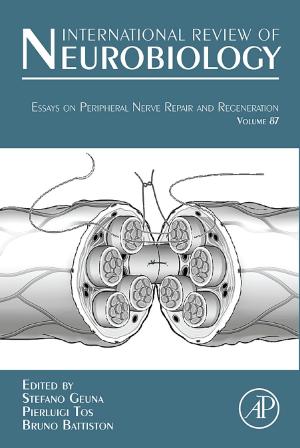Biofilms in Infection Prevention and Control
A Healthcare Handbook
Nonfiction, Science & Nature, Science, Biological Sciences, Microbiology, Health & Well Being, Medical, Ailments & Diseases, Infectious Diseases, General| Author: | ISBN: | 9780123977519 | |
| Publisher: | Elsevier Science | Publication: | January 30, 2014 |
| Imprint: | Academic Press | Language: | English |
| Author: | |
| ISBN: | 9780123977519 |
| Publisher: | Elsevier Science |
| Publication: | January 30, 2014 |
| Imprint: | Academic Press |
| Language: | English |
Biofilms in Infection and Disease Control: A Healthcare Handbook outlines the scientific evidence and rationale for the prevention of infection, the role biofilms play in infection control, and the issues concerning their resistance to antimicrobials. This book provides practical guidance for healthcare and infection control professionals, as well as students, for preventing and controlling infection.
Biofilms are the most common mode of bacterial growth in nature. Highly resistant to antibiotics and antimicrobials, biofilms are the source of more than 65 percent of health care associated infections (HCAI), which, according to the WHO, affect 1.4 million people annually. Biofilms are involved in 80 percent of all microbial infections in the body, including those associated with medical devices such as catheters, endotracheal tubes, joint prostheses, and heart valves. Biofilms are also the principle causes of infections of the middle-ear, dental caries, gingivitis, prostatitis and cystic fibrosis. Importantly, biofilms also significantly delay wound healing and reduce antimicrobial efficiency in at-risk or infected skin wounds.
- Provides specific procedures for controlling and preventing infection
- Includes case studies of HCAI, and identifies appropriate treatments
- Presents national government standards for infection prevention and control
- Includes extensive references and links to websites for further information
Biofilms in Infection and Disease Control: A Healthcare Handbook outlines the scientific evidence and rationale for the prevention of infection, the role biofilms play in infection control, and the issues concerning their resistance to antimicrobials. This book provides practical guidance for healthcare and infection control professionals, as well as students, for preventing and controlling infection.
Biofilms are the most common mode of bacterial growth in nature. Highly resistant to antibiotics and antimicrobials, biofilms are the source of more than 65 percent of health care associated infections (HCAI), which, according to the WHO, affect 1.4 million people annually. Biofilms are involved in 80 percent of all microbial infections in the body, including those associated with medical devices such as catheters, endotracheal tubes, joint prostheses, and heart valves. Biofilms are also the principle causes of infections of the middle-ear, dental caries, gingivitis, prostatitis and cystic fibrosis. Importantly, biofilms also significantly delay wound healing and reduce antimicrobial efficiency in at-risk or infected skin wounds.
- Provides specific procedures for controlling and preventing infection
- Includes case studies of HCAI, and identifies appropriate treatments
- Presents national government standards for infection prevention and control
- Includes extensive references and links to websites for further information















